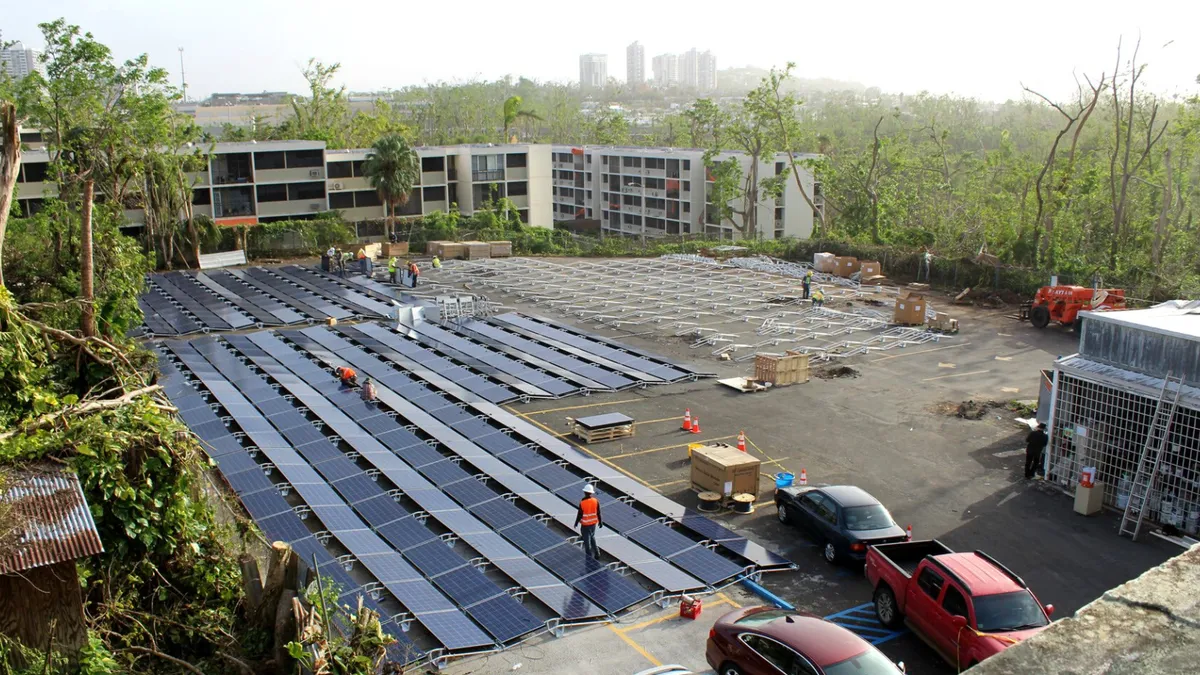Dive Brief:
- Puerto Rico lawmakers are considering legislation to restructure the island's energy sector and move to 100% renewable energy by 2050.
- The proposal includes ending the monopoly status of Puerto Rico Electric Power Authority (PREPA), the island's bankrupt utility that is still rebuilding after Hurricane Maria destroyed Puerto Rico's electric grid more than a year ago. While power has since been restored, the island is just beginning its broad rebuilding that will include modernization and integration of more renewable sources.
- Hearings on the legislation are slated to begin Friday in a joint session between the Puerto Rico House and Senate, according to Caribbean Business News.
Dive Insight:
Puerto Rico's electric grid was devastated by Maria, leaving thousands without power for almost a year. Now, the island's legislature sees an opportunity to rethink and rebuild how Puerto Rico generates and distributes power.
A full recovery is estimated to take up to a decade, but Friday's hearing could set PREPA on a new course.
PREPA is $9 billion in debt, which ultimately weighed on the utility's ability to manage storm response. A federal oversight board over the summer pushed PREPA to rewrite its budget and will now review the island's finances.
The bill under consideration would do away with the vertically-integrated utility model and create "a robust, accessible and efficient system" for companies to bid resources into, Puerto Rico Senate Vice President Larry Seilhamer Rodríguez said on introducing the bill.
A 100% renewables goal would set Puerto Rico on the same course as Hawaii, though other states have been considering the move, including Massachusetts, New York, Oregon, Washington and Pennsylvania. In September, California Gov. Jerry Brown signed into law a 100% clean energy goal to supply all retail electricity sales from carbon-free resources by 2045.
A report developed by a number of Puerto Rican and American energy interest groups called “Queremos Sol," or "We Want Sun," sketches how an all-renewables grid could be achieved. It envisions a focus on solar-plus-storage, efficiency, demand side management techniques and the integration of distributed resources.
The groups estimate providing 75% of homes in Puerto Rico with a 1.5 kW solar backup and a battery storage system of 5.4 kWh by 2035 would cost between $300 and $360 million per year, including labor.
The report said rooftop solar "reduces the need for large investments in transmission infrastructure and avoids transmission losses. It also reduces maintenance costs of the transmission and distribution network and minimizes impacts on natural resources."
The groups also warn that while some investment in gas-fired infrastructure may be required, the current push to develop new, large gas-fired plants "creates the risk of overbuilding the centralized generation system and saddling Puerto Rico in the long term with more natural gas than it needs, thus crowding out renewable energy."















